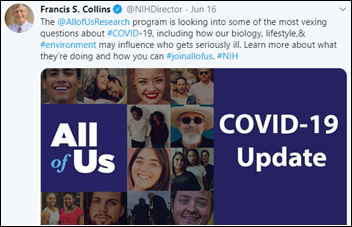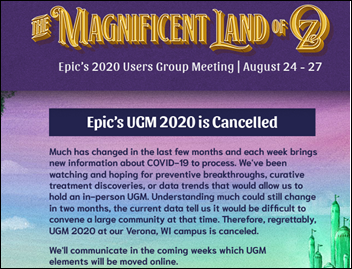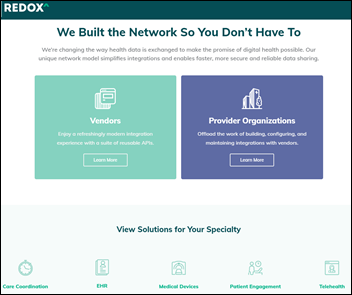Curbside Consult with Dr. Jayne 6/22/20
Former CMS Administrator Donald Berwick was featured in the Journal of the American Medical Association last week, writing about “The Moral Determinants of Health.” I was glad to see it, as I sorely needed a break from COVID-related literature and from the ongoing firefighting related to the pandemic’s many downstream impacts. Given the level of turmoil in our society right now, coupled with a disease that is disproportionately affecting various segments of the US population, it was just the read that I needed.
Many of us chose careers in medicine because we wanted to make a difference. Those of us who selected the realm of primary care knew we were taking on the challenge of being among the lower-paid and often less-respected subspecialties, but that was often balanced out by the knowledge that what we would be doing would be important.
For many of our patients, we would be the first member of the healthcare team they would turn to. Our training would help us be uniquely positioned to help solve their problems, through promotion of healthy behaviors or the recommendation of medication therapies or surgeries when needed. We didn’t choose to fight insurance companies or administrators, but as we left residency training for the real world of healthcare, it was obvious we were going to have to operate in an environment for which we were ill prepared.
Whether or not a patient is insured often dictates the care a patient receives, and that quickly creates a line between the haves and the have-nots. My generation of physicians didn’t learn about social determinants of health (SDOH) in our training, but SDOH always formed an undercurrent as we rotated through various clinics and offices in different parts of town. Depending on the ZIP code, the care we recommended varied widely and was largely tied to factors that led certain patients to be sicker than others and whether they could afford to have the care the needed. I had been in practice for nearly a decade before I ever heard a label for this phenomenon.
Berwick notes how significant these factors are, stating that “the power of these societal factors is enormous compared with the power of healthcare to counteract them.” He mentions the “subway map” view of life expectancy, where life expectancies decline for every minute of a subway ride between the “have” and “have not” areas of cities such as New York or Chicago.
Berwick describes the lack of logic in how wealthy nations address health. Although science can identify social causes for poor health, we spend our resources on “expensive repair shops” including medical centers and emergency care, rather than on prevention. He notes a lack of political will to date in shifting the focus of spending upstream, where a difference could be truly made. He mentions the concept of moral determinants of health, one of which is “a strong sense of social solidarity in the US.” In this construct, “Solidarity would mean that individuals in the US legitimately and properly can depend on each other for helping to secure the basic circumstances of healthy lives, no less than they depend legitimately on each other to secure the nation’s defense.”
He goes on to describe the foundations of a “morally guided campaign for better health,” which includes such concepts as the US catching up with the rest of western democracies on such topics as ratification of international treaties and conventions on basic human rights, action on climate change, and statutory support for healthcare as a human right. He notes that “no sufficient source of power exists to achieve the investments required other than discovery of the moral law within… the status quo is simply too strong. The vested interests in the healthcare system are too deep, proud, and understandably self-righteous; the economic and lobbying forces of the investment community and multinational corporations are too dominant; and the political cards are too stacked against profound change.”
Berwick ponders what it means for healthcare to stay in its lane and whether health leaders should take on these social challenges. He believes that the healthcare community needs to go beyond caring for illness, and that “it is important and appropriate to expand the role of physicians and healthcare organizations into demanding and supporting societal reform.” He calls on the healthcare community to spend less time lobbying for regulatory relief and improved reimbursement and more time lobbying for universal health insurance coverage. He calls for the healthcare workforce to use the ballot box to drive change. He closes with this:
Healers are called to heal. When the fabric of communities upon which health depends is torn, then healers are called to mend it. The moral law within insists so. Improving the social determinants of health will be brought at least to a boil only by the heat of the moral determinants of health.
The physician community is a microcosm of our society, and I know plenty of physicians who would rapidly align either for or against these ideas. I spent time this weekend with a surgeon who is “so over this whole COVID thing” and just wants to operate, and also with a psychiatrist who is helping others deal with the trauma they’ve experienced from having multiple family members die due to the pandemic. They’ve had dramatically different exposure to the downstream effects of the pandemic, even though both “healers” live in the same ZIP code and their kids go to the same school. We have to find a way to get past the polarization and to see things from other’s perspectives rather than just shutting them out because we have different experiences that may have driven different viewpoints.
I’ve learned of healthcare organizations that are tackling these issues head on and others that are trying to go back to the pre-pandemic, pre-protest era we lived in prior to 2020. It will be fascinating to see how strategies evolve and what organizations are willing to shift revenue upstream to public health and community projects that might just eliminate good portions of certain service lines.
Berwick has certainly given us food for thought, and it’s an ambitious list of actions he proposes. However, we just picked one of them, such as the idea that healthcare should be a human right, and figured out how we could come to consensus, we would still be in a much better place.
Is your organization addressing the moral determinants of health, the social determinants of health, or just trying to figure out how to get elective procedures scheduled again? Leave a comment or email me.
Email Dr. Jayne.

































































Traditionally Professional Courtesy is something that physicians gave each other - but we had to be careful with it when…